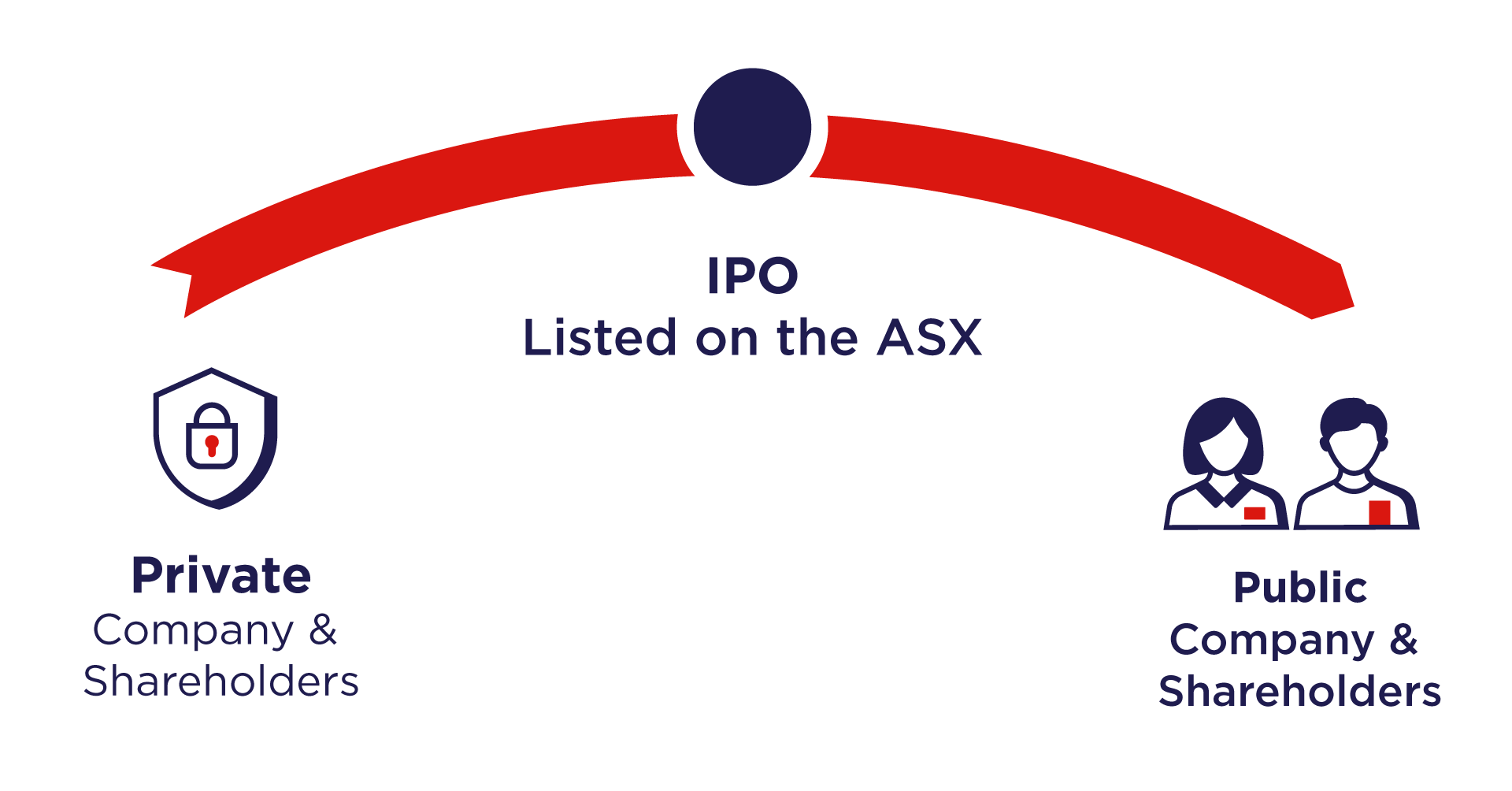How Initial Public Offerings (IPOs) work


An Initial Public Offering (IPO or float) is a process whereby a company raises equity capital by offering shares to the public for the first time. As an investor you may be able to access shares in an IPO, either directly or via your broker. Following an IPO, the company is ‘listed’ on the share market, and its shares can be traded.

The Company issues an IPO and listed on the ASX.
In order to raise equity capital via an IPO, a company must first prepare a prospectus and lodge it with the Australian Securities and Investments Commission (ASIC). The prospectus must contain all the relevant information investors would require to make an informed judgement regarding investment in the company.
The company will decide to whom it wishes to offer its shares. Some companies will allocate a portion of the shares on offer to customers, institutional investors, or to the general public. If entitled to apply for shares, you can do so by completing the application form in the prospectus (or via your broker if they are participating in the IPO).
Once applications are received, the company and its advisers will confirm allocations. If an IPO is 'oversubscribed', it means that the company has received applications for more shares than it has on offer. In this case, your application may be subject to ‘scale back’, and you may receive fewer shares than what you applied for or even none at all.
When allocations have been made and the application money received by the company, the new shares will then be 'listed' on the share market. Once listed, the company's shares can be traded as normal, and their price can rise or fall depending on market conditions and supply and demand for the shares.
A 'rights issue' is where an already listed company seeks to raise additional capital by offering new shares to existing shareholders. Shareholders are offered additional shares in the company on a predetermined basis; for example, one additional share for every 10 held. Rights issues are normally offered at a discount to the prevailing market price. Participation is optional.
A 'placement' is where an already listed company seeks to raise equity capital by offering new shares to a number of selected investors. Placements are typically made to institutional investors such as fund managers, but can also be made to clients of stockbroking firms. Placements are normally offered at a discount to the prevailing market price.
The information on this website has been prepared without taking account of your objectives, financial situation or needs. Because of this, you should consider its appropriateness, having regard to your objectives, financial situation and needs and, if necessary, seek appropriate professional advice. If a Product Disclosure Statement is available in relation to a particular financial product, you should obtain and consider that Product Disclosure Statement before making any decisions about whether to acquire the financial product. The information contained on this website does not constitute the provision of advice or constitute or form part of any offer, solicitation or invitation to subscribe for or purchase any securities or other financial product nor shall it form part of it or form the basis of or be relied upon in connection with any contract or commitment whatsoever. Any securities or prices used in the examples on this website are for illustrative purposes only and should not be considered as a recommendation to buy, sell or hold. Past performance is not a reliable indicator of future performance. This website may contain material provided directly by third parties. This information is given in good faith and has been derived from sources believed to be accurate at its issue date. While such material is published with necessary permission, no company in the Westpac Group nor any of their related entities, employees or directors (together, "Westpac"), nor the Participant, accepts responsibility for the accuracy or completeness of, or endorses any such material. This website may also contain links to external websites. Westpac and the Participant do not accept responsibility for, or endorse the content of, such external websites. Except where contrary to law, Westpac and the Participant intend by this notice to exclude liability for material provided directly by third parties and the content of external websites.